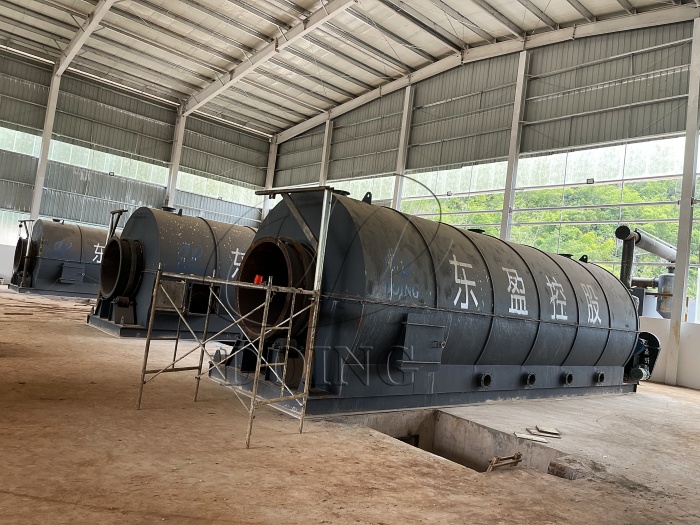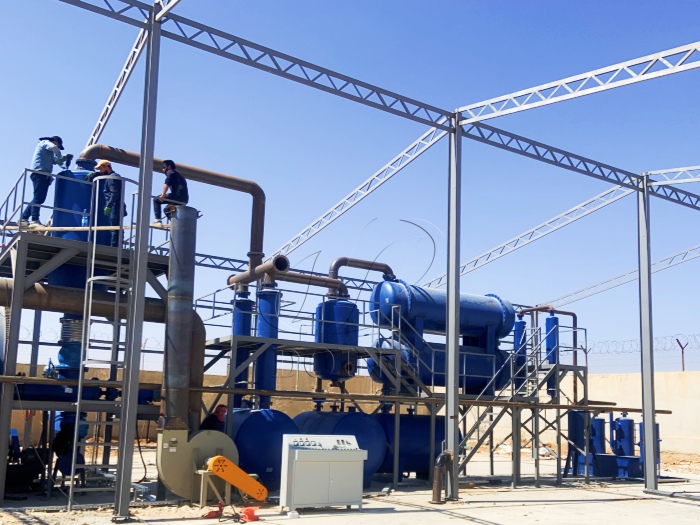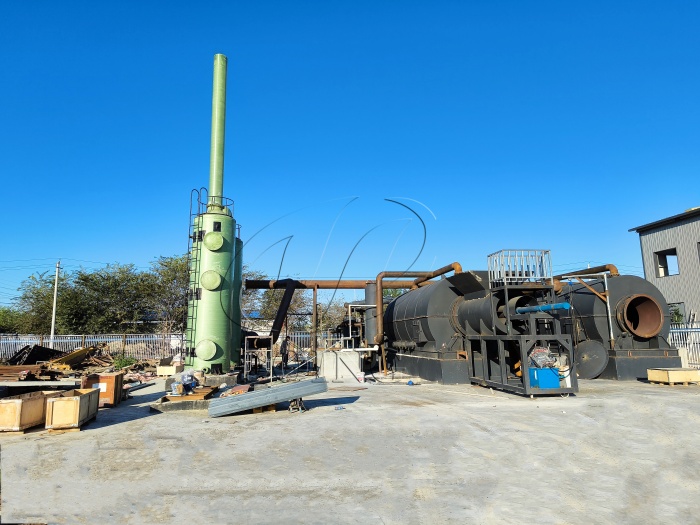How pyrolysis technology helps reduce the carbon footprint?
In today’s world, with rapid economic development and population growth, the issue of waste disposal has become increasingly severe. Traditional waste disposal methods, such as incineration and landfilling, not only occupy large amounts of land but also produce significant carbon emissions, exacerbating the greenhouse effect. Against this backdrop, pyrolysis technology has emerged as a promising solution for reducing carbon footprints.
At its core, pyrolysis is a thermochemical process that decomposes organic materials (like plastics, tire, rubber, waste sludge and biomass) in an oxygen-free environment under high temperatures. This critical absence of oxygen prevents the complete oxidation (burning) that occurs in incineration, which is a major source of CO2. Instead, the long-chain hydrocarbon polymers found abundantly in organic waste are broken down into smaller, usable molecules. This fundamental process shift is key to its carbon reduction potential.

Waste treatment methods
1. Significantly Reducing Direct Emissions:
By avoiding the oxygen-rich combustion of incineration and the anaerobic decomposition (producing methane, a potent GHG) common in landfills, pyrolysis technology drastically cuts direct greenhouse gas emissions. Waste treatment pyrolysis systems, like those engineered by DOING Company, achieve this by meticulously controlling the oxygen concentration throughout the process, minimizing any unwanted oxidation reactions. The result is a process inherently designed for lower carbon output compared to conventional waste disposal.

Waste pyrolysis technology benefits
2. Enabling Circularity and Avoiding Extraction Emissions:
Pyrolysis technology doesn't just destroy waste; it transforms it into valuable commodities. The outputs – primarily pyrolysis oil, syngas, and carbon black – serve as direct replacements for virgin fossil resources:
Pyrolysis Oil: Pyrolysis oil from waste is a heavy fuel oil used in such as boilers, cement plants, glass factories, and steel mills. pyrolysis oil can be further refined by distillation technology it into non-standard diesel, powering heavy machinery like trucks, trailers, generator, agricultural equipment, and ships.

Applications of pyrolysis oil
Syngas: Often utilized within the pyrolysis plant itself to provide the heat needed for the process, creating a self-sustaining energy loop and reducing reliance on external fossil fuels.

Syngas treatment, recovery and combustion
Carbon Black: Has diverse applications as an industrial raw material (e.g., filler, pigment), a high-quality solid fuel. Utilizing these recovered materials avoids the significant carbon emissions associated with mining, drilling, and manufacturing virgin equivalents.

Pyrolysis carbon black usages
3. Optimizing Processing Efficiency & Energy Use:
Modern, continuous pyrolysis plants, such as those offered by DOING, operate 24/7 with high levels of automation. This continuous operation is far more energy-efficient than traditional batch processing. Furthermore, the syngas produced is frequently captured and used to fuel the reactor, significantly reducing or even eliminating the need for external energy sources to sustain the thermal process. This internal energy recovery directly translates to lower operational carbon emissions.

DOING continuous pyrolysis plant advantages
4. Reducing Overall Environmental Burden and Disposal Costs:
Pyrolysis technology offers a comprehensive environmental benefit beyond just carbon. DOING's advanced pyrolysis plants feature fully sealed systems and incorporate sophisticated flue gas purification systems, effectively minimizing air pollutants and odors – problems often associated with incineration or open decomposition. Moreover, pyrolysis technology dramatically reduces the volume and toxicity of the final waste residue compared to landfilling raw waste. This translates to lower long-term environmental liabilities and reduced costs associated with landfill space, transportation, and aftercare.

DOING pyrolysis plant environment protection devices
Pyrolysis technology presents a compelling pathway towards a lower-carbon future for waste management. By diverting waste from landfills and incinerators, preventing direct emissions, recovering valuable resources as substitutes for virgin materials, and operating efficiently with internal energy recovery, pyrolysis delivers a substantial net reduction in the carbon footprint associated with organic waste.

DOING waste pyrolysis plant manufacturer
DOING Company is at the forefront of this transformation. We specialize in designing and manufacturing advanced, waste treatment pyrolysis plants that maximize resource recovery and minimize environmental impact, including carbon emissions. Our solutions are engineered for reliability, efficiency, and compliance, helping customers turn their waste challenges into sustainable opportunities.
Tyre pyrolysis oil is increasingly used as industrial fuel in the market, but unrefined tyre pyrolysis oil contains a lot of impurities and is not effective, so it is better to be distilled to improve the quality of the oil.
Waste oil refining plant is specially designed for waste oil and pyrolysis oil to diesel. This whole refining process includes distillation, cooling, decoloring and deodoring system.
DOING company is strong and has other different processing capacity equipment to choose from, 500kg, 1T, 3T, 5T, 10T. , 12T, 15T, 30T, 50T, 100T, and so on. Compared with these large capacity equipment, small plastic to fuel machine also has its unique ad
Please feel free to leave your contacts here and your privacy is protected. A competitive quotation will be provided according to your detailed requirement within one business day.
-
 Tel/WhatsApp: 0086-135-2669-2320
Tel/WhatsApp: 0086-135-2669-2320
-
 Phone: 0086-371-5677 1821
Phone: 0086-371-5677 1821
-
 Skype: bonniezhao2
Skype: bonniezhao2
-
 E-mail: sales@doingoilmachine.com
E-mail: sales@doingoilmachine.com
- Is pyrolysis better than incineration?
- What are its plastic pyrolysis benefits compared to traditional plastic recycling methods?
- How pyrolysis technology helps reduce the carbon footprint?
- Can you get money out of old tires?
- What is the Most Profitable Plastic Recycling Way?
- How to Set Up a Tire Pyrolysis Recycling Business?
- Why is PET and PVC not suitable for pyrolysis?
- How much oil gas is generated during the pyrolysis of plastics?
- How to Improve the Quality of Plastic Pyrolysis Oil?
- Equipment composition of waste plastic oil pyrolysis production line



Leave a message

Mobile/Wechat/Whatsapp:





